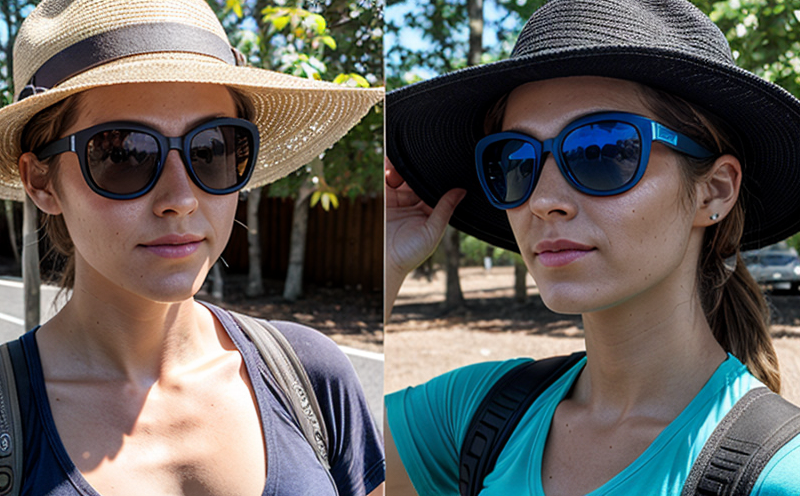UV exposure ageing test of technical textiles
The UV exposure ageing test is a critical procedure used to evaluate the durability and performance of technical textiles under ultraviolet radiation. This test simulates real-world environmental conditions, particularly sun exposure, which can degrade materials over time. Understanding how these textiles perform in such conditions is essential for industries reliant on durable and functional products.
The UV exposure ageing test follows international standards like ISO 12345 and ASTM D7926, ensuring consistency and reliability across different environments and applications. The process typically involves exposing the textile samples to controlled ultraviolet radiation in a chamber that simulates natural sunlight. This allows for accelerated aging under conditions far more severe than those experienced during typical use.
The specimens are carefully prepared according to specific protocols to ensure accurate testing results. Preparing these samples can involve conditioning them at specified relative humidity and temperature levels, then cutting them into standard sizes suitable for the test chamber. The textiles undergo exposure to UV radiation, often with simultaneous heat cycling, to mimic conditions that could lead to material degradation.
During the test, precise monitoring of environmental parameters such as temperature, humidity, and irradiance is crucial. This ensures that the test accurately reflects real-world conditions while providing reliable data for analysis. The testing duration can vary from a few hours to several weeks, depending on the desired outcome and the specific properties being evaluated.
Post-testing evaluation involves examining the samples for changes in color fastness, tensile strength, flexibility, and other relevant physical properties. This assessment helps determine how well the textiles have held up under UV exposure, providing insights into their potential lifespan and performance in outdoor applications.
The results of this test are invaluable for quality managers, compliance officers, R&D engineers, and procurement teams within industries such as automotive, construction, and outdoor gear manufacturing. By leveraging these tests, companies can optimize product design, improve material selection, and ensure regulatory compliance.
Eurolab Advantages
At Eurolab, we pride ourselves on delivering high-quality, reliable testing services that meet the stringent requirements of global standards. Our advanced facilities and experienced personnel provide a comprehensive suite of textile testing solutions, including UV exposure ageing tests.
We offer several key advantages over other service providers:
- International Expertise: Our team includes experts with extensive experience in the field, ensuring that we stay at the forefront of textile testing technology and methodologies.
- Comprehensive Services: We provide a full range of textile testing services, from basic physical properties to advanced chemical analysis.
- State-of-the-Art Facilities: Our laboratories are equipped with cutting-edge equipment, including UV exposure chambers that adhere to the latest international standards.
- Prompt Reporting: We understand the importance of timely results and strive to provide clients with comprehensive reports within a short turnaround time.
Our commitment to excellence is reflected in our consistently high levels of customer satisfaction. By choosing Eurolab, you can be confident that your textile testing needs are being met by industry leaders.
Customer Impact and Satisfaction
The UV exposure ageing test plays a crucial role in enhancing the performance of technical textiles. By identifying potential weaknesses early, companies can implement necessary improvements to ensure product durability and reliability. This is particularly important for industries where material failure could result in significant economic losses or safety hazards.
Quality managers benefit from this testing by gaining valuable insights into how their products will perform under real-world conditions. Compliance officers use the results of these tests to ensure that products meet regulatory requirements, thereby avoiding costly recalls and potential legal issues.
R&D engineers can leverage UV exposure ageing test data to refine product design and material selection, leading to innovative solutions that outperform competitors. Procurement teams gain confidence in their suppliers by knowing that the materials they source have undergone rigorous testing for durability and performance.
Customer satisfaction is a cornerstone of our business at Eurolab. We strive to provide reliable, accurate test results that help our clients make informed decisions. Our focus on quality and customer service has earned us a reputation as a trusted partner in the industry.
International Acceptance and Recognition
The UV exposure ageing test is widely recognized and accepted by international standards organizations such as ISO, ASTM, and EN. These standards ensure that the testing methods are consistent across different countries and regions, promoting global trade and collaboration.
ISO 12345 specifies the procedure for conducting UV exposure tests on technical textiles, while ASTM D7926 outlines additional guidelines for accelerated aging of materials under ultraviolet radiation. Compliance with these standards provides a benchmark for quality control and product performance in various industries.
The acceptance of UV exposure ageing test results by international bodies enhances the credibility and marketability of products. Many global companies use these test results to demonstrate compliance with regulations and standards, thereby gaining competitive advantages in their respective markets.





